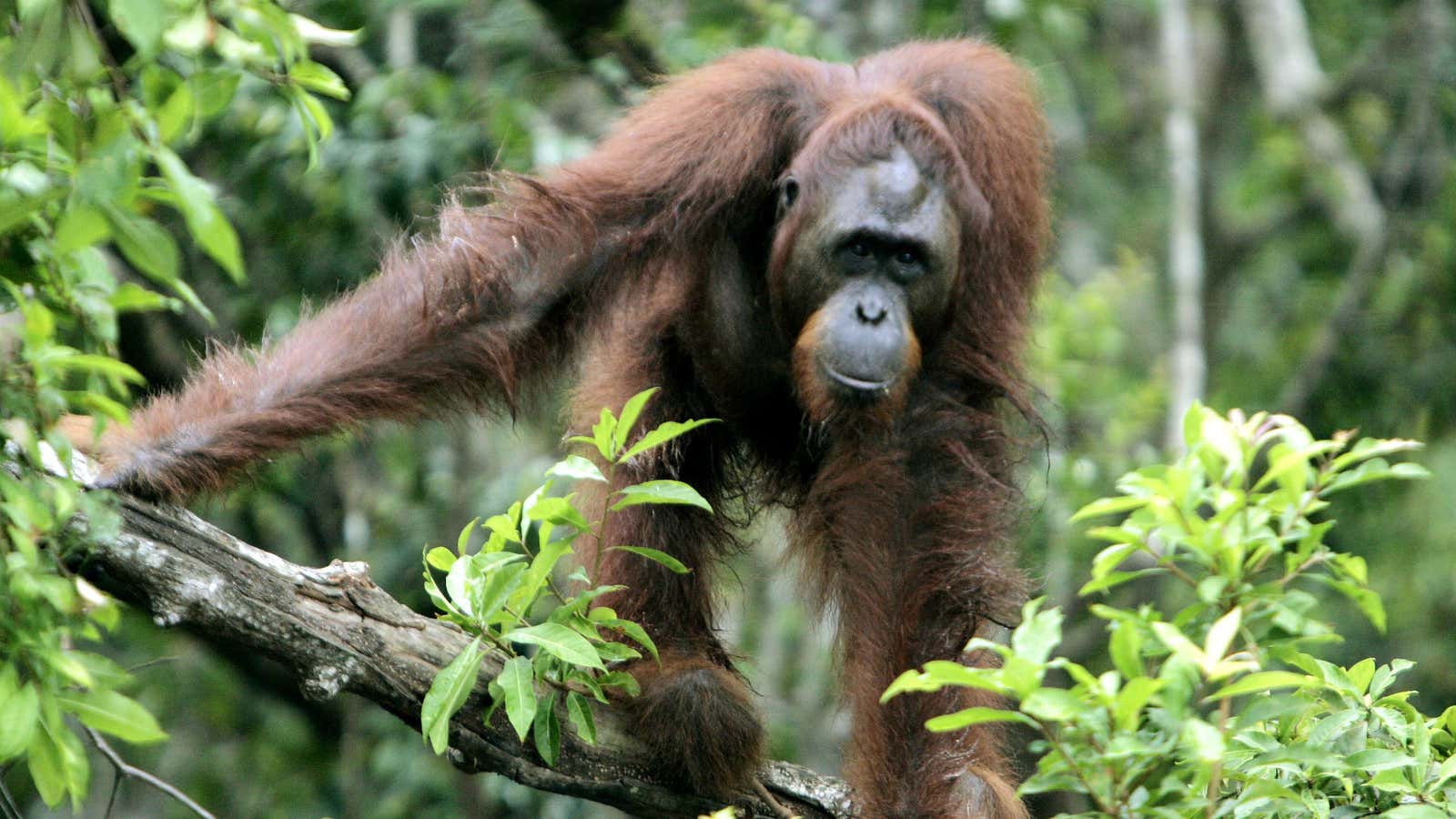It can be found in everything from toothpaste to margarine, listed as vegetable oil or a whole host of other more complex names. Palm oil and its byproducts are in high demand these days, as food manufacturers move away from trans fats and biofuels become more popular. India imported over $6 billion worth of palm oil products in 2014—and that was only 18% of total global imports of palm oil that year.
The growth of the palm oil industry has had a devastating environmental side effect: the deforestation of a critical habitat for one of our closest relatives, the Borneo orangutan. The acrobatic orange-furred apes are considered critically endangered as of February by the International Union for the Conservation of Nature (IUCN). That’s the group’s most dire classification.
Conservation groups have started sanctuaries to protect the orangutans, but there may not be time left to save the species from extinction. ”I would probably say 10 years if we cannot stop the destruction” of their habitat, Alan Knight, head of the International Animal Rescue charity group, told the Independent. He predicted the Sumatran orangutan, a relative of the Borneo orangutan found on the nearby island of Sumatra, would face extinction even sooner.
Over 40 million acres, an area nearly the size of Wisconsin, are devoted to palm oil production worldwide. But 90% of the world’s oil palm trees grow on plantations in Indonesia and Malaysia, including both countries’ states on the island of Borneo. The IUCN estimates that 39% of Bornean forests were lost between 1973 and 2010, with much of that land converted to palm plantations. By 2025, they expect another 37% of the remaining orangutan habitat to be converted to plantations.
Demand for palm oil won’t be dropping any time soon. The stuff has a lot going for it: it’s solid at room temperature (which means it’s more stable and lasts longer), doesn’t contain trans fats, and is one of the highest-yielding oil crops by acre. Its low cost and food-friendly properties make it an ideal ingredient for foods like ice cream, pizza and baked goods, as well as soaps, detergents, cosmetics, and biofuels. According to the World Wildlife Fund, palm oil and its derivatives can be found in over half the packaged products on the American market.
So what’s an orangutan-conscious consumer to do?
Responsible palm oil consumption requires a lot of label reading. Ingredients derived from palm oil include sodium laureth sulfate (a surfactant found in shampoos and soaps that helps them foam), palmitic acid (used in food for flavoring and anticaking properties), and stearic acid (found in soaps and candles as a thickener). Given their ubiquity, and their many names, cutting out palm oil byproducts entirely would be difficult.
Instead, consumers can check labels to find out if their palm oil ingredients were produced sustainably. The Roundtable on Sustainable Palm Oil, an industry nonprofit group that works with producers and processors, labels certified sustainable palm oil products with a special seal. About 17% of the world’s palm oil supply is certified by RSPO. Companies that use palm oil can also purchase certificates from the Green Palm trading program to offset their oil use, similar to purchasing carbon credits. The annual scorecard put out by the Union of Concerned Scientists grades a variety of companies on their commitment to sustainable palm oil sourcing.
These sorts of consumer choices could help the Borneo orangutan recover, but the primate isn’t the only animal impacted by deforestation for plantations. The Sumatran tiger, Sumatran rhino, and the Sumatran elephant are all critically endangered species that rely on dwindling rainforests for habitat—and whose recovery could be aided by more sustainable palm oil production.
